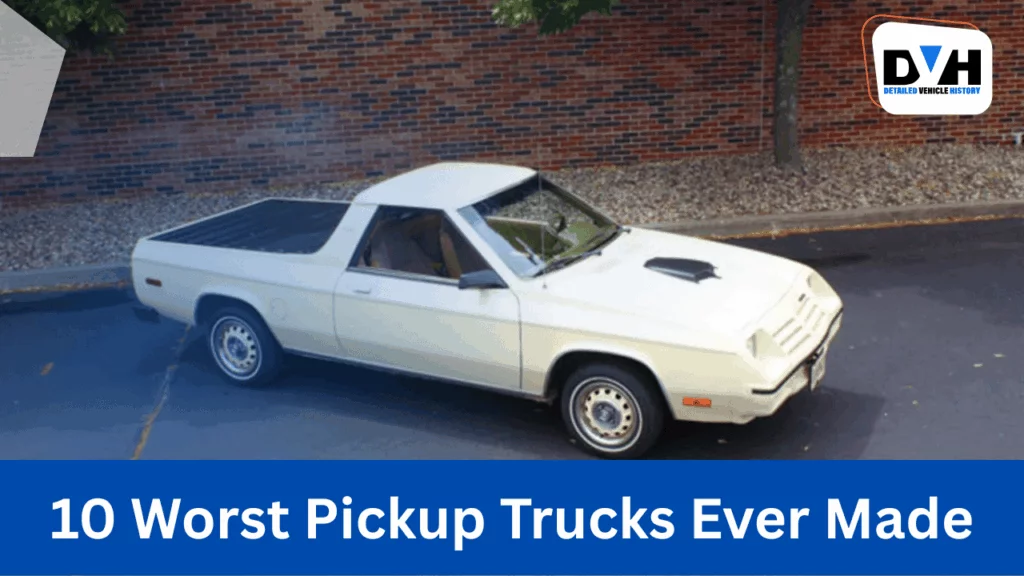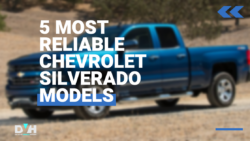Not every pickup truck is a winner. Some models earned reputations for being unreliable, impractical, or downright disappointing. Knowing which pickups to avoid is vital, especially when shopping for a used truck. A quick truck VIN lookup can help you uncover any potential issues and avoid making a poor purchase.
Let’s take a look at why some trucks missed the mark and review models remembered for all the wrong reasons.
Turns Out The Versatility Of A Pickup Doesn’t Automatically Make A Great Truck
Pickup trucks are admired for their ruggedness, impressive towing capabilities, and versatility. However, some trucks could have done better in living up to those standards. Poor design, weak engines, or reliability issues often held these trucks back. For buyers, this means more time in the shop and less time on the road.
Understanding what makes a truck bad helps you avoid future headaches. If you’re serious about buying a used truck, checking its history is essential.
A VIN decoder can uncover past accidents or repairs, offering insights before you commit.
Subaru Baja
The Subaru Baja is an example of a car-truck hybrid that confused buyers. With its small bed and unremarkable towing capacity, it didn’t cater to truck enthusiasts. The design leaned more toward quirky than functional, lacking the rugged utility people expect from a pickup.
While it had a loyal niche following, most buyers stayed away, leaving it as a cautionary tale about trying to do too much with one vehicle.
Mazda Rotary Pickup
Mazda’s Rotary Pickup was an ambitious attempt to innovate with a rotary engine. Unfortunately, that engine was the truck’s downfall. It guzzled gas at an alarming rate and had questionable reliability.
The innovative design wasn’t enough to keep buyers interested, especially when competitors offered more reliable and efficient options.
If you’re considering a classic like this, checking out classic cars that won’t break the bank might save you from making an expensive mistake.
Read also: 12 Most Reliable Trucks
Reliant Ant
The Reliant Ant was neither mighty nor practical. It was a three-wheeled pickup designed for lightweight utility. Unfortunately, it was more of a novelty than a useful vehicle.
Its three-wheel design made it unstable and unsuitable for hauling heavier loads. In the end, the Ant was more of a curiosity than a real workhorse.
Chevy SSR
The Chevy SSR looked like a hot rod but drove like a letdown. It combined pickup styling with convertible fun, but the result could have been more practical.
Its tiny bed had limited utility, while its high price scared off potential buyers. It didn’t deliver where it mattered most for something that was supposed to be a performance-focused truck.
Ford Fairmont Durango
Ford’s attempt to turn the Fairmont into a truck resulted in the oddball Durango. Its car-like build didn’t give it the strength or utility of an actual pickup.
Only a few thousand were ever made, and they remain mostly as collectors’ items. While rare, they don’t offer the ruggedness expected from a truck.
Dodge Rampage
The Dodge Rampage was another car-based pickup that failed to impress. Its lightweight design and front-wheel-drive setup didn’t appeal to traditional truck buyers.
While it aimed to be a practical option for city dwellers, it couldn’t compete with full-size trucks for towing and durability. This makes it one of the least-loved Dodge pickups ever made.
2000 Dodge Dakota
The 2000 Dodge Dakota was a mid-size truck plagued by reliability issues. Transmission problems, engine troubles, and rust were all common complaints.
For buyers, maintenance costs quickly increased, turning what seemed like an affordable truck into a money pit. Running a window sticker lookup can reveal original features and help gauge the value of a used Dakota.
90s Dodge Rams
Dodge had its fair share of hits and misses in the 90s. Some Rams from this era were known for their poor build quality and engine issues.
Transmission failures were frequent problems, and rust was another major concern. Before buying an older truck like this, research how to find the best used car at the right price to avoid unpleasant surprises.
Hummer H2 SUT
The Hummer H2 SUT might look tough, but its performance tells a different story. Its gas mileage could have been better, and its size made it impractical for everyday use.
While it had a bold presence, most owners realized they needed to sacrifice more utility for style.
Jeep Gladiator
The modern Jeep Gladiator hasn’t lived up to its hype for everyone. Critics point to its high price, underwhelming payload, and occasional reliability complaints.
Jeep loyalists might still love it, but those looking for a practical work truck might be better off exploring alternatives with better MPG SUV and dependability.
First-Gen Chevy Colorado/GMC Canyon
The first-generation Chevy Colorado and GMC Canyon models didn’t age well. They suffered from weak engines, low towing capacities, and quality issues.
While newer models have improved, early versions left many owners frustrated. If you’re considering a used mid-size truck, dig into its vehicle history report for any red flags.
Read also: Top 10 Global Truck Manufacturers
Conclusion
Buying a used pickup can save money, but only if you avoid the lemons. Researching common problems for specific models is crucial. A vehicle history report can reveal important details like past accidents or major repairs.
Stick to reliable models and remember that a flashy design doesn’t always mean a great truck. Whether you need towing power, off-road capability, or a dependable daily driver, choosing wisely will save you headaches and money.









